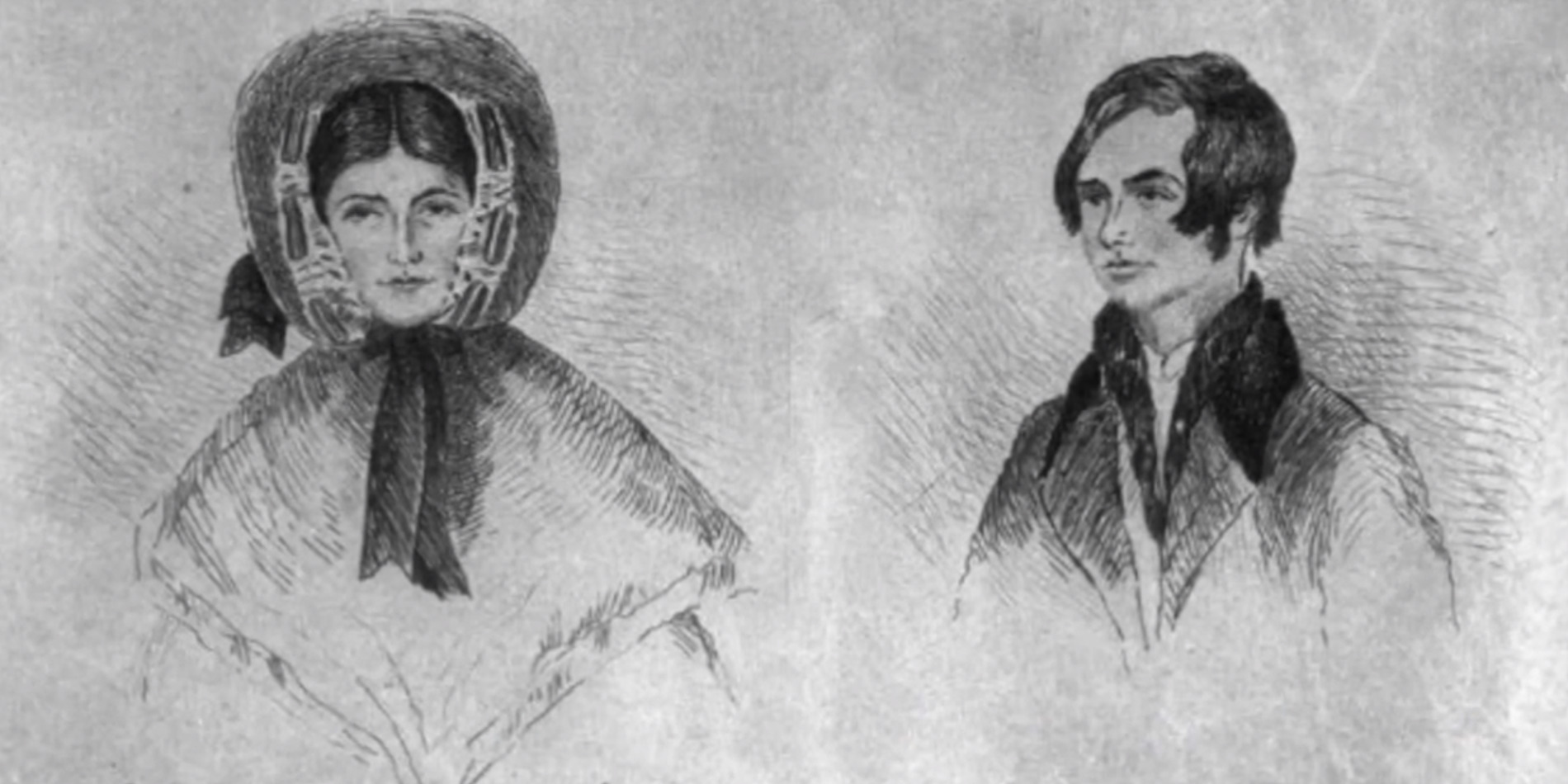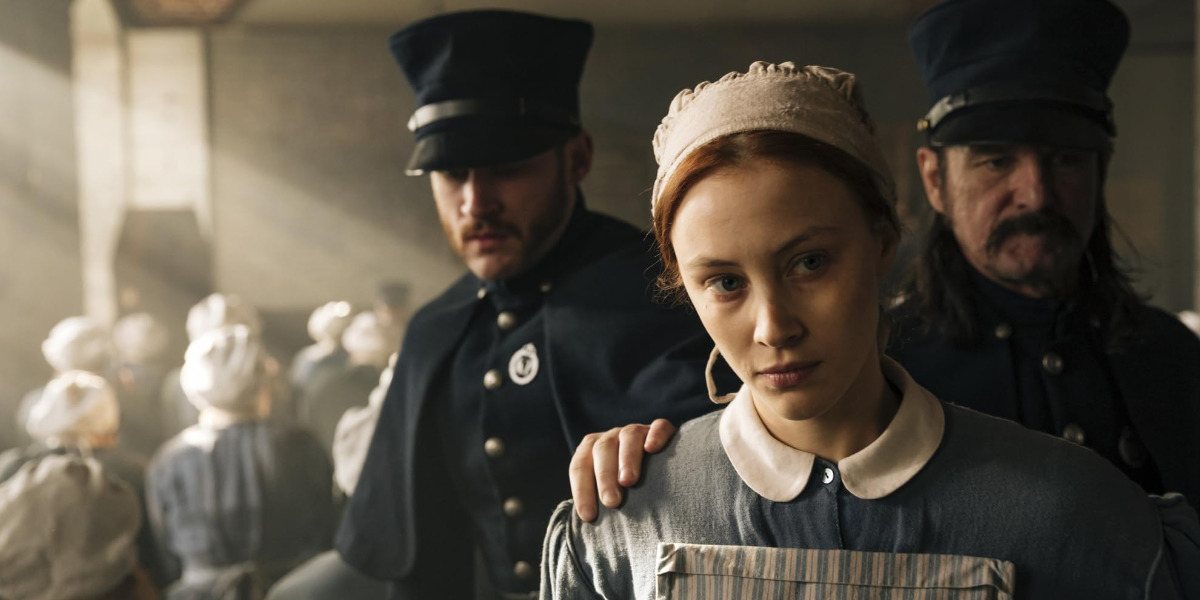The 2017 Netflix show ‘Alias Grace’ charts the life and crime of the mysterious murderess Grace Marks through her own unreliable narration. After a double homicide case of Kinnear and his housekeeper, Montgomery, Grace Marks, convicted for the crime, serves a life imprisonment sentence in Kensington Penitentiary. However, uncertainty remains about the degree of Grace’s involvement in the murders. Thus, an esteemed psychiatrist, Simon Jordan, arrives from America to converse with the woman about her past, shrouded in intrigue, and pass his prestigious verdict.
The show scrutinizes Grace Marks’ character, following her life story to arrive at the scene of the incriminating crime that decided her ultimate long-lasting impression on the public. Given the show’s historical setting and Marks’ occupancy within the same as a “celebrity criminal,” her story effortlessly becomes a subject of intrigue. Therefore, if you’re curious about its true origins in reality, here is everything you need to know.
The Real-Life Story of Grace Marks
‘Alias Grace,’ created by Sarah Polley and Mary Harron, is an adaptation of the 1996 eponymous novel by revered Canadian author Margaret Atwood. Furthermore, the real-life case of Grace Marks inspired Atwood’s book itself. Consequently, the Netflix mystery drama ends up having firm roots in both Atwood’s literature and a true-crime story.

In 1843— as depicted in the show— 16-year-old Grace Marks and 20-year-old James McDermott, servants at Thomas Kinnear’s residence, were convicted of the Scottish gentleman and his housekeeper, Nancy Montgomery’s murders. Although the pair tried to flee the crime scene and their subsequent apprehension after stealing valuables from the estate, the authorities caught up to them soon. Yet, while both received death sentences for their crimes, only McDermott was hanged.
In young Marks’ case, the jury decided to exact leniency and only condemned her to life imprisonment. In 1872, almost three decades after her arrest, the young Irish immigrant was granted a pardon and promptly disappeared from the public eye thereafter. Nevertheless, in those three decades— and many more to come, Marks continued to be a source of curiosity and intrigue for the public.
Neither the law nor public speculation could ever unearth the truth behind what went down at the Kinnear residence on the day of the murders. Only four people were privy to that knowledge, but two had died, the third hanged, and Marks held her silence until the end. As such, no one knew what to make of Grace Marks, if she was indeed a cruel murderess or only a coerced accomplice. Her station as a female domestic servant further colored everyone’s perception of her and the truth.
While speaking about Marks and her case, author Atwood said, “The interesting thing is the way everybody projects their ideas onto Grace. The fact that she had various stories that she told to different audiences, well— that always affects the story that you tell — who the audience is. Does it not?”
Margaret Atwood’s Alias Grace
Like numerous before her, Margaret Atwood also found herself taken by the mysterious case of Grace Marks. After contemplating the woman and her story for years, Atwood finally published her novel ‘Alias Grace’ in 1996. While the novel retained much creative liberty in depicting Marks’ life, with Atwood freely inventing details to suit her book’s narrative, her story remained faithful to Marks’ life in one crucial aspect: its ambiguity.

“Grace was convicted as an accessory [to the Kinnear murder] because she didn’t tell,” said Atwood. “We never knew, and she never told. She acted as one of those blank screens onto which everybody commenting projected.”
As such, Atwood maintained the same obscurity in her novel, told through Grace’s perspective, which forever remains capricious, keeping the readers on their toes. Polley, no more than a teenager at the time, was one such reader who was captivated by the story. As such, the young future filmmaker wrote to Atwood, requesting to acquire the movie rights for her book. Although the author turned the request down at the time, Polley achieved her dream of bringing the story to the screen years later.
Ultimately, according to Atwood, Polley ended up being a fantastic choice for the job. “She [Sarah Polley] understood that the ambiguity mattered most, but ambiguity is tricky on film,” said Atwood, praising Polley’s skills at conveying the same. Polley went on to write the screenplay for all six episodes of the miniseries. Thus, despite dominating every storyline with her presence in the show, Polley’s Grace Marks remains aptly elusive both in her character and crime.
Therefore, Polley and her creative partner, Director Mary Harron, seamlessly brought Atwood’s story to the screen. In doing so, they explored significant elements of the real-life Grace Marks’ life— notably its lack of an unyielding truth. “If I had known the truth, I probably wouldn’t have written a book,” said Atwood at a screening of the show. “And if I had known the truth and told it to Sarah [Polley], she probably wouldn’t have made this show.” Ultimately, ‘Alias Grace’ is based on a book about a real-life event that continues to bear a big, enigmatic question mark.
Read More: Alias Grace Ending, Explained


You must be logged in to post a comment.